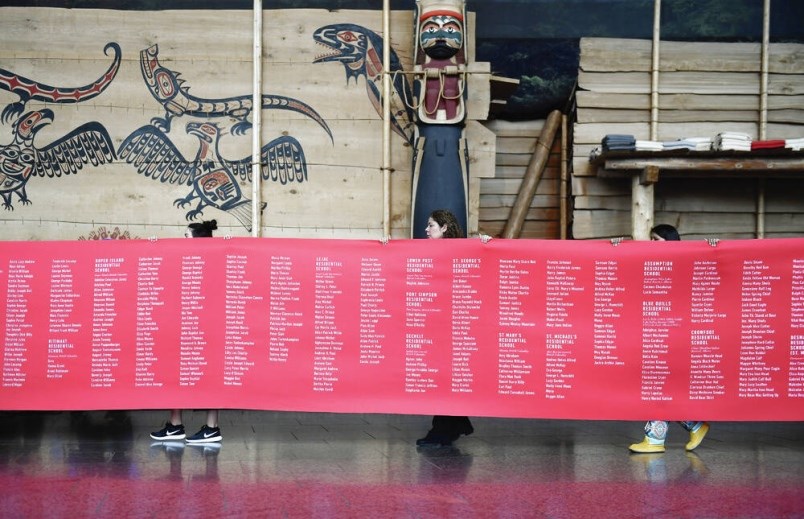The first ever National Day for Truth and Reconciliation on Thursday is a time for non-Indigenous people to ask themselves what reconciliation means to them and what they can do to advance it, says the founding director of the National Centre for Truth and Reconciliation.
The answers will be different for everyone, said Ry Moran, who became the University of Victoria’s first associate university librarian for reconciliation after six years as the director of the national centre in Manitoba.
“It might be different for a landscaper than it is for a lawyer, but there is something that you can do. Perhaps it becomes if you’re a landscaper becoming much more informed about local Indigenous plants,” he said.
The idea is not to be told what to do, but to understand the calls to action in the Truth and Reconciliation Commission, the National Inquiry into Missing and Murdered Indigenous Women and Girls and other reports, and “find some way that you see yourself in there, and then do that thing. And when you do that thing, do it over again, and do it over again and keep doing it,” Moran said.
Sept. 30 marks the first National Day for Truth and Reconciliation in Canada. The federal government created the national day in June to honour the children forced to attend government-funded residential schools, where Indigenous children suffered emotional, physical and sexual abuse. Many died in the schools, and the discoveries of probable unmarked graves near the former grounds of several institutions this year has sparked a renewed reckoning with Canada’s genocidal history.
Sept. 30 has also been known and recognized as Orange Shirt Day, named for the brand new orange shirt Phyllis Webstad wore and had taken from her as a six-year-old on her first day at a residential school.
People can use the day to further their understanding of “the history, experiences, hopes, dreams, aspirations of Indigenous peoples” by reading those reports, as well as the Royal Commission on Aboriginal Peoples and B.C.’s In Plain Sight report on racism in health care, Moran said.
He suggested using as a starting point the Truth and Reconciliation Commission’s call to action, which provides a list of things everyone should understand, like the history of residential schools, history of Crown-Indigenous relations and the creation of the reserve system.
“It is not a holiday. And if you ever doubt what your action should be on this day, just put yourself into the shoes of a parent or an uncle or grandparent or an auntie that had their child removed, and think about what you would hope other people would do for you,” he said.
If you do nothing else on the day, Moran said, tune into a special one-hour broadcast that will stream live at 8 p.m. Thursday on APTN, CBC, CBC Gem and CBC Radio One, honouring the stories of Indigenous peoples affected by the residential school system in Canada.
Eric Pelkey, Community Engagement Coordinator for the W̱SÁNEĆ Leadership Council — composed of Tsartlip, Tseycum and Tsawout nations — said he hopes people will use the day to learn more about the nations whose land they live on. He suggests starting at wsanec.com, which provides resources for people wanting to learn more about supporting reconciliation, or taking the learning outside with a walk up PKOLs, also known as Mount Douglas.
“Read the story of PKOLS, and it goes over the history of our people, and the meaning of PKOLS. I think that would be a good first move,” he said.
Steve Sxwithul’txw, who attended Kuper Island Residential School, said it’s important for non-Indigenous people to participate in events on Thursday if they have the day off work.
“Number one: be with us on this day. We’ve had a rough, rough summer and more importantly, we’ve had a very challenging number of decades leading up to this. So, it would be great to see more friendly faces with us, either in Centennial Square or other events up and down the Island,” Sxwithul’txw said.
In addition to wearing orange, attending an event, and educating yourself, Sxwithul’txw said people need to recognize that more discoveries of unmarked graves are likely coming as more nations work toward searching the grounds of former residential schools.
“Know that this isn’t over just because we have this one holiday, and things have kind of quieted down right now. It’s coming,” he said.




